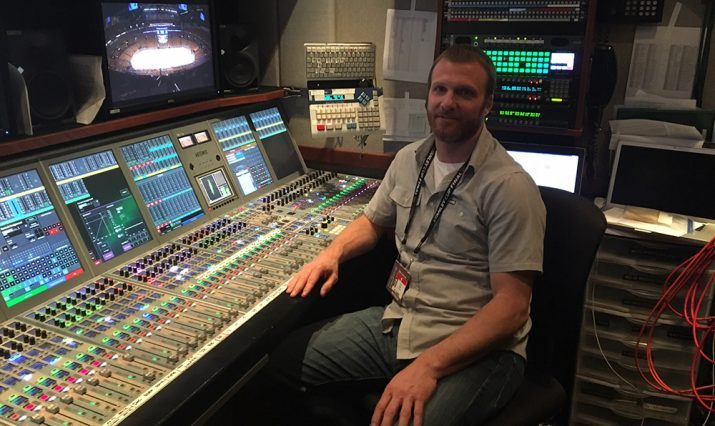NHL Stadium Series: Broadcast Audio Draws on Years of Outdoor Hockey
Fans’ return to the stands boosts use of crowd mics
Story Highlights
Outdoor hockey has been around long enough to have acquired some conventions for its broadcast-audio capture and mix. This weekend’s 2022 Navy Federal Credit Union NHL Stadium Series, taking place in Nashville at the NFL Tennessee Titans’ Nissan Stadium and broadcast on Turner Sports, will deploy many of those conventions, such as the Crown PCC contact microphones used for ice effects. But there are a few idiosyncrasies of outdoor ice matches that keep things interesting.

A1 Tim Dunn will handle the broadcast audio for NHL Stadium Series at NFL’s Nissan Stadium in Nashville.
For instance, the PCCs are good for keeping skate blades clear and. present. In the past, experiments placing the mics in dasher boards proved less successful.
“That was part of a little bit of an experiment at the Olympics in Sochi,” says longtime A1 for NHL games Tim Dunn, who has been tackling the outdoor matches since 2014, including three New Year’s Day Winter Classics. “But I wasn’t overly impressed with the results. So we’re miking this ice like we would do any other game, with the Crown PCCs.”
The return of live crowds at outdoor games has led to the use of more crowd microphones. Dunn, who mixed the NHL’s Lake Tahoe game in 2021 without fans in the stands, is deploying a combination of Shure VP-88 and Audio-Technica BP40 mics. These are spread over four high and three low positions.
“I learned the first outdoor game I did that you’ve got to keep the crowd separate [in the overall mix] because they’re not right on top of the ice like they typically are in an arena,” he says. “You have to make sure that you’re going to hear the reactions, because [the fans] are just so far away. You get away with getting a lot of crowd sound from your ice mics during a regular-season game because it bleeds in there. I probably overdo it a little bit on these outdoor games just to make sure I’m covered.”
A submix, handled by Doug Klyne, is also a bit off the typical script. Instead of mixing the ice effects, it will be focused more on the six player microphones — three per side — and two coach mics, all of which are being recorded for replays. That’s because the production will be reaching for personal audio from more locations, including locker rooms.
“Doug’s doing that,” says Dunn, “and keeping an eye on levels and things where we’re going to have a camera, such as one that goes in to record some speeches in the locker rooms. He’ll be trying to chase it and try to get as much as we can there.”
Another wrinkle this weekend is that the NHL is moving to consolidate the activity around wiring players and coaches for sound: instead of assigning some microphones and transmitters to the broadcaster and some to the league, the league has assigned all personal audio to the RF provider for the game, assisted by lead A2 Patrick Flynn. It’s a model he says has been successful for the NBA.
“We were all trying to come up with a better template than we’ve had for how to do [RF for] these events. It has always been a little chaotic every time you go to a new stadium: it’s all the same parts and pieces, but it all goes together differently every time. We’re trying to come up with a template that works a little better, with one central distribution location. I like it. I think it’s gonna work great.”
